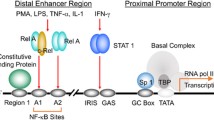Summary
The characteristics of the binding of human monocytes to tumor cells were studied by a newly developed microassay. First, we determined the kinetics and optimal conditions of the binding. Monocytes recognized and bound to tumor cells very rapidly within 10–20 min of cellular interaction. Binding was also more efficient at 37°C suggesting that active metabolism of monocytes is required. Second, we determined that selective binding of monocytes to cells with tumorigenic phenotypes occurs. For this purpose, lymphocytic leukemia cell lines versus normal lymphocytes, and tumorigenic versus nontumorigenic hybrids from the same parental lines were compared as the targets of the binding assay. In both cases, neoplastic cells were selectively bound by monocytes. Although tumor cells were bound rapidly and selectively by monocytes, initial recognition and binding did not necessarily lead to subsequent tumor cell lysis. This is based on the observation that some tumorigenic parental and hybrid lines were avidly bound by monocytes yet not subsequently killed in a cytotoxicity assay.
Similar content being viewed by others
References
Adams DO, Marino PA (1981) Evidence for a multistep mechanism of cytolysis by BCG-activated macrophages: the interrelationship between the capacity for cytolysis, target binding, and secretion of cytolytic factor. J Immunol 126:981–987
Adams DO, Johnson WJ, Marino PA (1982) Mechanism of target recognition and destruction in macrophage-mediated tumor cytotoxicity. Fed Am Soc Exp Biol 41:2212–2221
Bakouche O, Koff WC, Brown DC, Lachman LB (1987) Interleukin I release by human monocytes treated with liposome-encapsulated lipopolysaccharide. J Immunol 139:1120–1126
Bucana C, Hoyer LC, Hobbs B, Bressman S, McDaniel M, Hanna MG, Jr (1976) Morphological evidence for the translation of lysosomal organelles from cytotoxic macrophages into cytoplasm of tumor target cells. Cancer Res 36:4444–4458
Bucana C, Hoyer LC, Schroit AJ, Kleinerman ES, Fidler IJ (1983) Ultrastructural studies of interaction between liposome-activated human blood monocytes and allogenic tumor cells in vitro. Am J Pathol 112:101–111
Der CJ, Stanbridge EJ (1981) A tumor-specific membrane phosphoprotein marker in human cell hybrids. Cell 26:429–438
Fidler IJ (1985) Macrophages and metastasis — a biological approach to cancer therapy. Presidential address. Cancer Res 45:4714–4726
Fidler IJ, Kleinerman ES (1984) Lymphokine-activated human blood monocytes destroy tumor cells but not normal cells under cocultivation conditions. J Clin Oncol 2:937–943
Giard DJ, Aaronson SA, Todaro GJ (1973) In vitro cultivation of human tumors: establishment of cell lines derived from a series of solid tumors. J Natl Cancer Inst 51:1417–1423
Keller R (1977) Mononuclear phagocytes and antitumor resistance: a discussion. In: James K, McBride B, Stuart A (eds), The macrophage and cancer, University of Edinburgh, pp 31–49
Kleinerman ES, Schroit AJ, Folger WE, Fidler IJ (1983) Tumoricidal activity of human monocytes activated in vitro by free and liposome-encapsulated human lymphokines. J Clin Invest 72:304–315
Kleinerman ES, Ceccorulli LM, Bonvini E, Zicht R, Gallin JI (1985) Lysis of tumor cells by human blood monocytes by a mechanism independent of activation of the oxidative burst. Cancer Res 45:2058–2064
Kurt-Jones EA, Beller DI, Mizel SB, Unanue ER (1985) Identification of a membrane-associated interleukin 1 in macrophages. Proc Natl Acad Sci USA 82:1204–1208
Lachman LB, Diarello CA, Llansa ND, Fidler IJ (1986) Natural and recombinant human interleukin 1 is cytotoxic for human melanoma cells. J Immunol 136:3098–3102
Marino PA, Adams DO (1980) Interaction of Bacillus Calmette-Guerin-activated macrophages and neoplastic cells in vitro. Cell Immunol 54:26–35
McClay DR, Wessel GM, Marchase RB (1981) Intercellular recognition: Quantitation of initial binding events. Proc Natl Acad Sci USA 78:4975–4979
Meltzer MS, Tucker RW, Breuer AC (1985) Interaction of BCG-activated macrophages with neoplastic and nonneoplastic cell lines in vitro. Cell Immunol 17:30–42
Minowada J, Janossy F, Greaves MF, Tsunoda T, Srivastava BIS, Morikawa S, Tatsumi E (1978) Expression of an antigen associated with acute lymphoblastic leukemia in human leukemia lymphoma cell lines. J Natl Cancer Inst 60:1269–1277
Nissen-Meyer J, Austgulen R, Espevik T (1987) Comparison of recombinant tumor necrosis factor and the monocyte-derived cytotoxic factor involved in monocyte-mediated cytotoxicity. Cancer Res 47:2251–2258
Onozaki K, Matsushima K, Aggarwal BB, Oppenheim JJ (1985) Human interleukin 1 is a cytocidal factor for several tumor cell lines. J Immunol 135:3962–3968
Roozemond RC, Bonavida B (1985) Effect of altered membrane fluidity on NK cell-mediated cytotoxicity. I. Selective inhibition of the recognition or post recognition events in the cytolytic pathway of NK cells. J Immunol 134:2209–2214
Saiki I, Najar R, Bucana C, Fidler IJ (1986) A microassay for the rapid and selective binding of cells from solid tumors to mouse macrophages. Cancer Immunol Immunother 22:125–131
Snodgrass MJ, Harris TM, Geeraets R, Kaplan AM (1977) Motility and cytotoxicity of activated macrophages in the presence of carcinoma cells. J Reticuloendothel Soc 22:149–157
Somers SD, Mastin JP, Adams DO (1983) The binding of tumor cells by murine mononuclear phagocytes can be divided into two qualitatively distinct types. J Immunol 131:2086–2093
Somers SD, Whisnant CC, Adams DO (1986) Quantification of the strength of cell-cell adhesions: the capture of tumor cells by activated murine macrophages proceeds through two distinct stages. J Immunol 136:1490–1496
Unkeless JC, Eisen HN (1975) Binding of monomeric immunoglobulins to Fc receptors of mouse macrophages. J Exp Med 142:1520–1533
Urban JL, Shepard HM, Rothstein JL, Sugarman BJ, Schreiber H (1986) Tumor necrosis factor: a potent effector molecule for tumor killing by activated macrophages. Proc Natl Acad Sci USA 83:5233–5237
Author information
Authors and Affiliations
Additional information
This work was supported in part by a grant from the National Institutes of Health CA42992 and a grant from the Kleberg foundation
Abbreviations used: [125I]IdUrd [125I]iododeoxyuridine; rIFN-γ, recombinant human interferon γ; IL-1, interleukin 1; rTNF, recombinant human tumor necrosis factor
Rights and permissions
About this article
Cite this article
Shimizu, H., Wyatt, D., Knowles, R.D. et al. Human monocytes selectively bind to cells expressing the tumorigenic phenotype. Cancer Immunol Immunother 28, 185–192 (1989). https://doi.org/10.1007/BF00204987
Received:
Accepted:
Issue Date:
DOI: https://doi.org/10.1007/BF00204987




